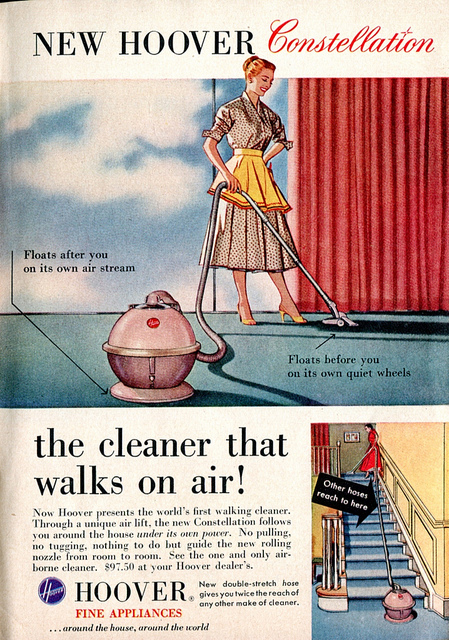
When searching for ways to live healthier lives, we tend to gravitate toward things like exercise, conscious eating, yoga and getting a good night’s sleep.
Each of these activities is undeniably important, but all too often, we overlook perhaps the most key component of clean living: our homes.
Our homes are full of life. In addition to myself, I have two sons, one husband, four dogs and lots of plants living in mine. This is where we all eat, sleep and grow together—and it’s crucial to make sure this environment is as healthy as it can be.
Our homes are hazardous.
Whether we realize it or not, we’re surrounded by many hazards in our homes. From the paint on our walls to the water we drink to the air we breathe, countless components could be affecting our health in ways we’d never imagine.
Many people—myself included—just can’t resist the charm of older homes. While these beautiful structures may be full of character, they’re also full of invisible threats to our well-being.
For example, if a home was built before the 1980s, it’s possible that its walls have at least one coat of lead-based paint on them. In fact, more than 20 million U.S. housing units currently contain lead-based paint, and more than 12 million American children are living in these potentially dangerous environments.
My first house was built in the 1970s, and I loved everything about it: the diagonal siding, the dramatic rooflines and the oversized fireplace, in particular. However, one of the first things my husband and I did when we moved in was check for both lead and asbestos. Ingesting lead can cause a number of health issues—ranging from insomnia to kidney damage to death — while asbestos are airborne minerals that can cause serious lung problems when inhaled.
It turns out, our walls tested positive for lead, but our asbestos test came back negative. After learning this, we repainted all our walls, sealed every crack we could find, cleaned all our door frames and window sills and replaced some of our water pipes to reduce our risk of lead exposure.
Radon is another invisible health danger that should be on our radar. Every building on earth has some detectable level of this radioactive gas in it—which sounds scarier than it really is. In small doses, radon is relatively harmless, but if it builds up over time, it can wreak havoc on our health. According to the U.S. Environmental Protection Agency, radon—which is created by the breakdown of uranium in soil—causes 21,000 lung cancer deaths per year, and it’s the second leading cause of the disease.
As a parent who does everything she can to steer her sons away from smoking, it horrified me to learn that a naturally occurring gas in my home could be causing the same type of damage to their lungs. Children breathe faster and have smaller lungs than adults do, so they absorb higher doses of radon at a faster rate.
Even though things like lead and radon have likely been in our homes for decades, it’s up to us to be vigilant about identifying and mitigating these types of health risks.
Keep homes healthy with these three steps.
Maintaining a healthy home and living environment is one of the most important things we can do for ourselves and the welfare of our families. A healthy home for us and our loved ones should be our top priority—especially for those of us with younger kids.
Here are three simple steps we can take to ensure our living spaces are as healthy as possible:
1. Minimize allergens.
Allergies affect approximately 50 million Americans, and they can be caused by many things: plants, trees, food, dust, cigarette smoke and even humidity. We might not have the power to control mother nature, but we can certainly keep our living spaces free of smoke, dust and other things that make our families sneeze, wheeze, and itch.
I have suffered from mild allergies all my life, so cleaning our household and eliminating as many allergens as possible has always been an important part of our daily living. We have converted most of our floors to wood to keep the dust out, and we vacuum the little bit of carpeting we have daily. Further, we usually try to keep our windows closed during pollen season and rely more on home ventilation and air conditioning (being sure to regularly clean our air ducts and filters). Finally, we’ve also removed a lot of clutter from our house that was only collecting dust—like tabletop ornaments and old stuffed animals, for example.
For those who live in damp climates, it’s important to note that humidity breeds mold—an allergen that’s known to cause health issues that range from nose and throat problems to coughing to skin irritation. I highly recommend installing dehumidifiers in damp rooms to keep mold growth under control. And if a mold problem is identified, it needs to be taken care of ASAP.
2. Read labels.
It’s no secret that some household products, such as cleaning supplies and pesticides, are downright dangerous. The fumes alone can cause health problems such as headaches and asthma, but the biggest danger comes from ingesting them. Every year, two million poisoning incidents are attributed to pesticides, and half of them involve children younger than six years old.
When it comes to hazardous products in our homes, we need to use common sense. We need to read the labels, and if they’re covered in warnings, we should try to avoid those products. If we must use a highly dangerous product, we need to make sure the rooms we’re standing in are properly ventilated and, afterward, lock the product away in a cabinet that kids can’t access—preferably not under the sink.
I take several precautions to keep my family safe from dangerous household chemicals. I store them in a high cabinet that is far out of reach from both kids and pets, I never leave them open or unattended while I’m cleaning, and I also make sure to educate my kids about just how hazardous these materials truly are.
3. Test early and often.
We shouldn’t wait until someone in our families is already feeling symptoms. We need to take the proactive route and test our homes for radon, lead, mold or other allergens today.
There are experts in every town who are happy to visit our homes, take a look around and identify all our health hot spots—like that corner in the basement that’s highly susceptible to mold or that air duct that hasn’t been cleaned in years. Or we could even consider purchasing at-home testing kits that check the quality of our air and the composition of our water.
Conducting these tests is an essential step to create the healthy home our families deserve. Had it not been for an at-home test, I would’ve never known my first house was covered in lead-based paint. It felt great to take matters into my own hands and proactively take care of my family’s well-being.
It’s a scary world out there, but our homes don’t have to be. As they say, home is where the heart is—but it’s also where our health is. Let’s do our best to protect it.
Author: Zeynep Ilgaz
Image: SenseiAlan/Flickr
Editor: Catherine Monkman








Read 0 comments and reply